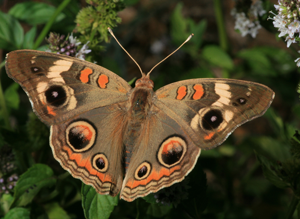The Common Buckeye has large, realistic eyespots that can startle predators when the wings open suddenly.
Photo Credit: John Brandauer via flickr
Junonia coenia
Common Name: common buckeye
Animal Guild: Insect
Class > Order > Family: Insecta > Lepidoptera > Nymphalidae
